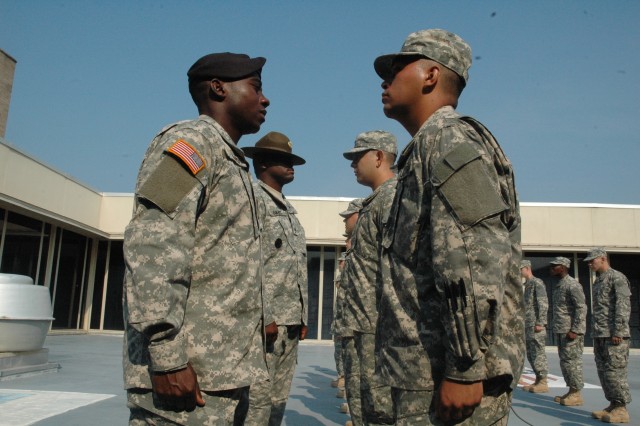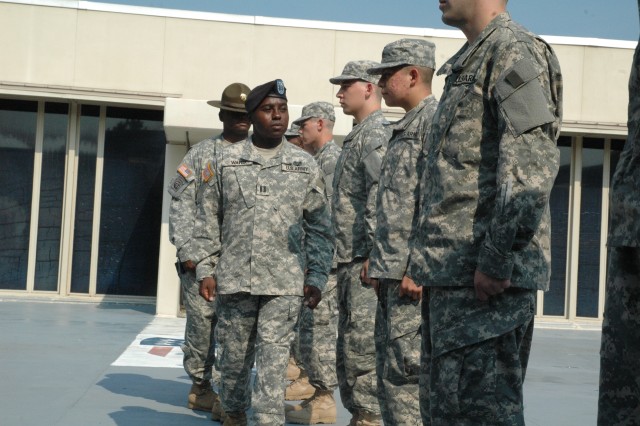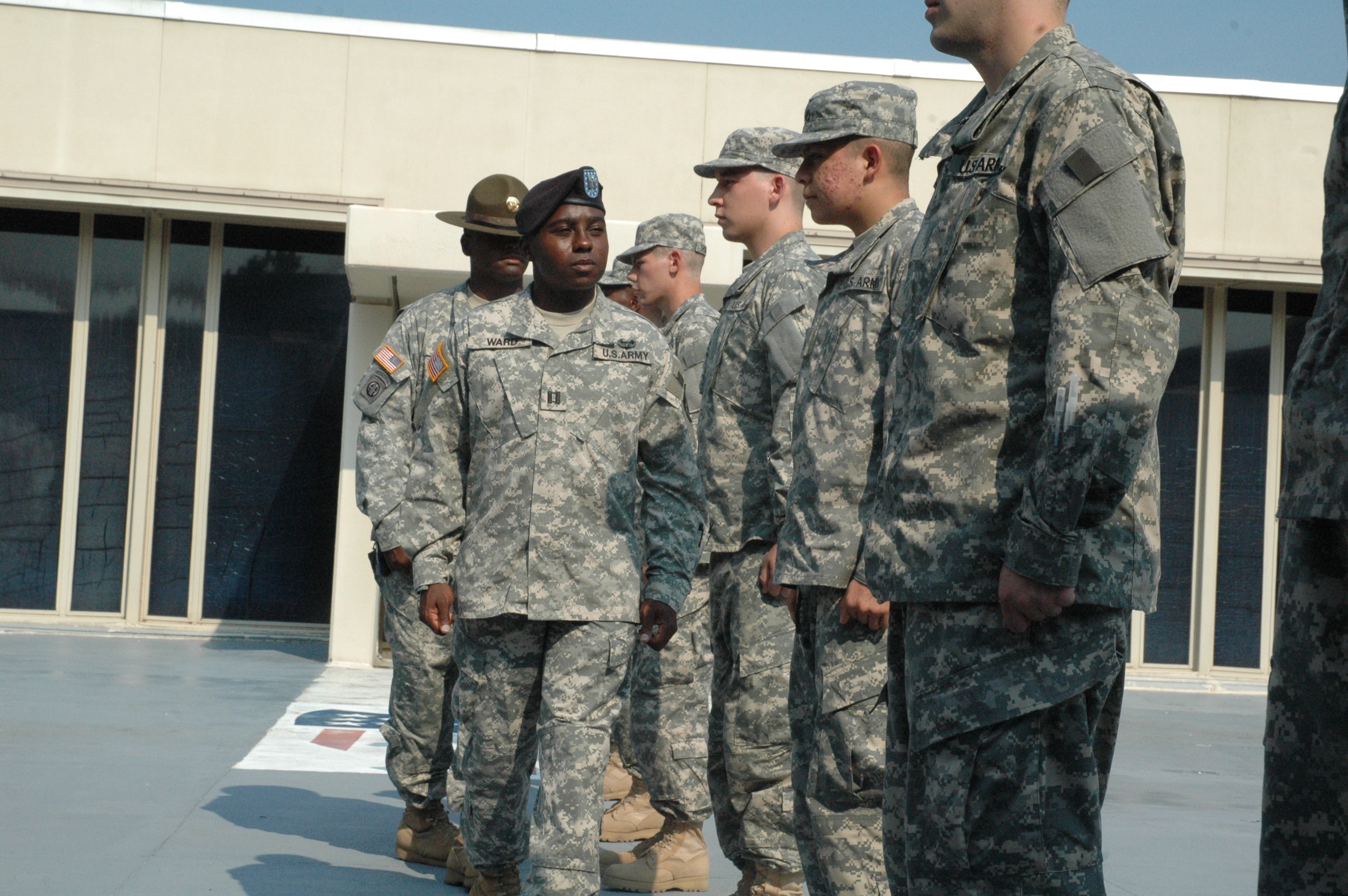Down time is a thing of the past for Soldiers arriving at Fort Jackson's 120th Adjutant General Battalion (Reception) for Basic Combat Training; that is because under a new reception process they begin soldierization on Day One.
This process, known as Blended Reception, began as an effort to provide a more efficient and effective way of in-processing Soldiers as well as training them. It began as a pilot program in 2007 and was implemented across Fort Jackson in January.
For more than 20 years on Fort Jackson, Soldiers were processed through Legacy Reception. Through this type of reception, Soldiers were processed by 120th Adjutant General Battalion (Reception) cadre and would spend seven to 14 days there. Now, they are spending, at most, four days in-processing, reducing the amount of idle time they have.
With Blended Reception, a Soldier coming into the Army is greeted by his or her drill sergeant at the 120th AG Bn., said Stephen Pinette, deputy G3. For the four days while the Soldier is in-processing, the drill sergeant can train him or her during down time.
Command Sgt. Maj. Roderick Brown, 120th AG Bn. command sergeant major, agreed that ensuring efficient training is important.
"Under Blended Reception there isn't much idle time," he said. "It is designed to get Soldiers to their trainer on Day One when they arrive at the reception station."
Transitioning from civilian life into the Army's way of life can be a challenging task for some incoming Soldiers. Blended Reception makes that transition easier because the drill sergeants are able to work with the 120th AG Bn. personnel to get their Soldiers through in-processing.
"(Drill sergeants) get to know the Soldiers better because they are here with them," said Capt. Gary Ward, Company B, 2nd Battalion, 39th Infantry Regiment commander. "Because of the slower pace, we can get to talk to them more about their personal issues, so once we get to the unit, we can start training. They get a better relationship early on with their drill sergeant, which gives them confidence."
During the four days Soldiers spend at the 120th AG Bn., when they are not sleeping or in-processing, their drill sergeants are training them in drill and ceremony, they are studying their Smart Book and they are given a 1-1-1 (one minute of push-ups, one minute of sit-ups and a 1-mile run) physical training test.
Staff Sgt. Wesley Davis, Co. B, 2nd Battalion, 39th Infantry Regiment drill sergeant, said that during Legacy Reception there was so much training that had to be covered when the drill sergeants finally got the Soldiers to the company before they could move on to more important things that it was like force-feeding them.
"The training we are able to do up here (at the 120th AG Bn.) puts us like two steps ahead and we can just jump into our company stuff," Davis said. "We can move on to something that is more important when we get down to the company, like BRM (basic rifle marksmanship)."
Since the switch over to Blended Reception across Fort Jackson minor changes have been made to improve the process such as timelines and hiring more civilian personnel.
Improvements in the Blended Reception process will carry over into fiscal year 2009 as Fort Jackson continues to in-process Soldiers though Blended Reception.
"I think Blended Reception is a smart idea," Lt. Col. Collin Fortier, 2nd Battalion, 39th Infantry Regiment commander said. "It gets (drill sergeants) to know their guys right away and those Soldiers to know the drill sergeants so they get the perfect introduction to the Army."
Ashley.Rose.Henry@us.army.mil




Social Sharing